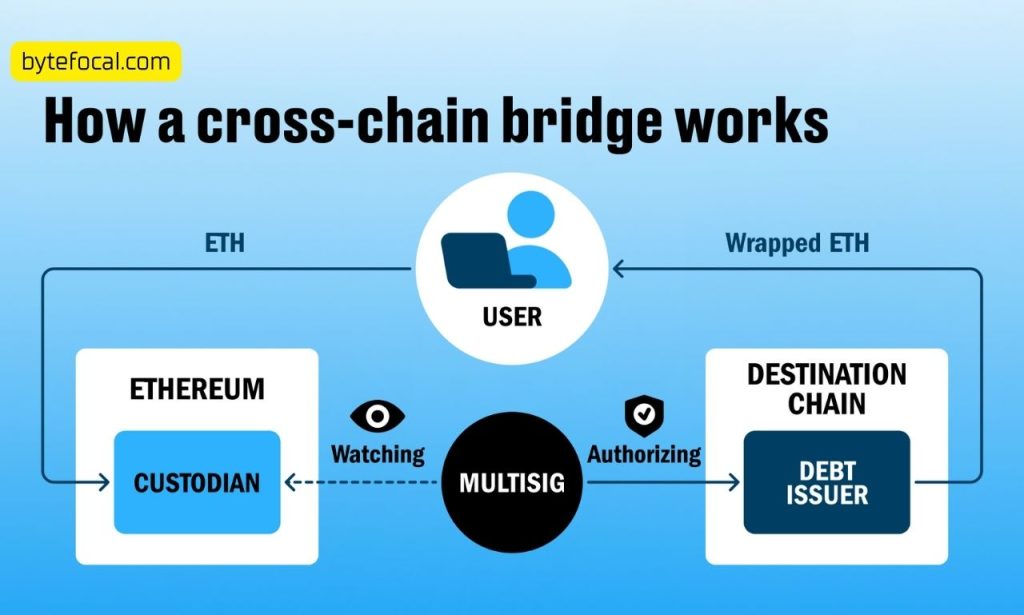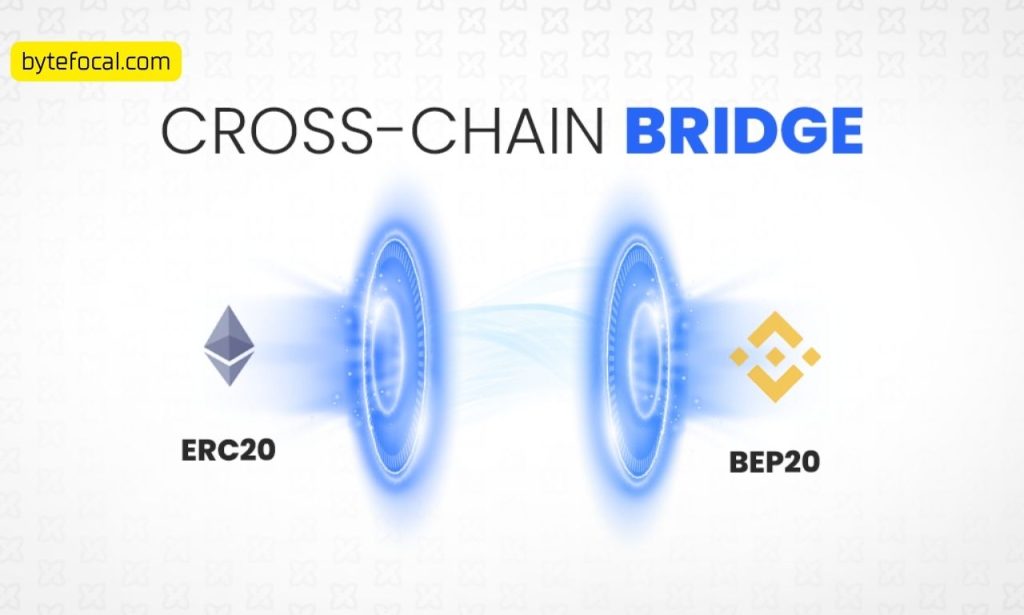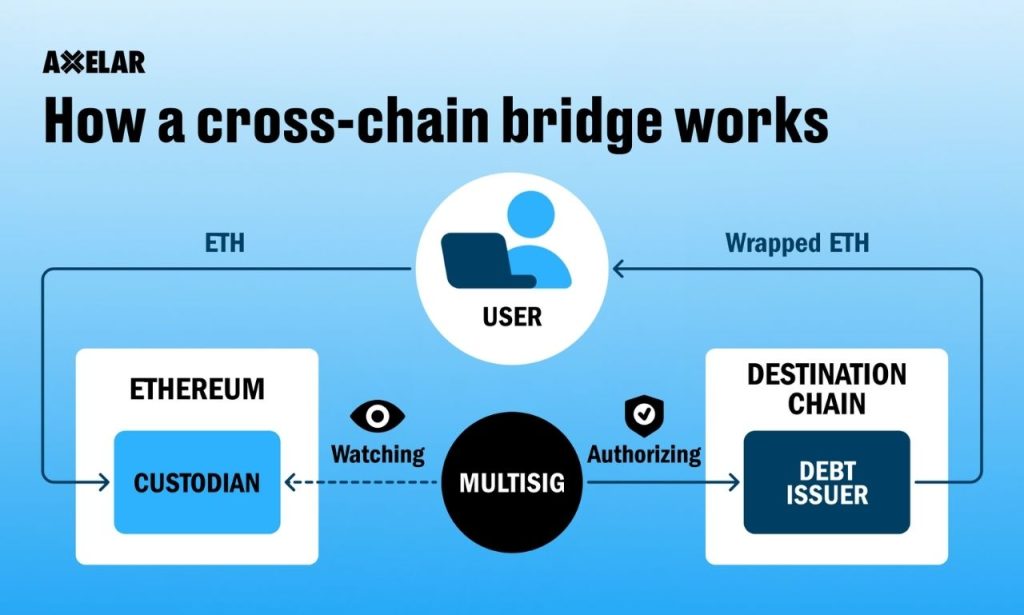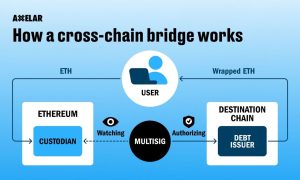Cryptocurrency users often face a frustrating problem: assets trapped on separate blockchains. You buy Bitcoin but can’t use it on Ethereum. Your NFTs live on one chain while your DeFi investments sit on another. The crypto world wasn’t built to be connected.
This digital isolation creates headaches for both investors and developers. Money moves slowly between systems. Opportunities vanish while waiting for exchanges. Transaction fees pile up with every conversion.
Cross-chain bridges offer a solution to this fragmentation. They connect isolated blockchain islands into a unified crypto continent. With them, your assets gain freedom to move where needed.
The cryptocurrency landscape continues expanding rapidly. New chains emerge monthly with unique advantages. Without bridges, this innovation creates more walls than pathways.
I remember struggling to move my assets between networks last year. Hours wasted, fees doubled, and trades missed. That experience showed me why bridges matter for everyday crypto users.
This article explores how these technological bridges work. We’ll examine their benefits, challenges, and future potential. Understanding them unlocks crypto’s next evolution.
What are cross-chain bridges?

Cross-chain bridges connect separate blockchain networks. They allow users to send assets between different systems without the need for central exchanges. Bitcoin can be transferred to Ethereum, and Solana tokens can be moved to Polygon.
Think of blockchains as separate islands with unique resources. Bridges create highways connecting these islands for trade and communication. Without them, each blockchain remains isolated from others.
These bridges solve a fundamental problem in crypto. Blockchains weren’t designed to talk to each other naturally. Each uses different code, rules, and structures.
Blockchain bridges come in various forms. Some operate through smart contracts while others use relay systems. Many require token wrapping to maintain consistency across chains.
The concept emerged from crypto’s growing complexity. Early users needed only one chain like Bitcoin. Modern users interact with multiple ecosystems requiring constant movement between them.
Bridges vary in their decentralization levels. Some rely on trusted operators to validate transfers. Others use algorithmic verification across distributed networks.
Most major blockchains now offer bridge solutions. Examples include Polygon Bridge, Avalanche Bridge, and Binance Bridge. Each serves similar functions with technical differences.
Bridge transactions typically follow specific patterns. Users lock assets on the source chain. The bridge confirms this action. Equivalent assets appear on the destination chain.
How do cross-chain bridges work?
Cross-chain bridges rely on sophisticated technical mechanisms. They must verify assets on one chain before creating equivalents elsewhere. This process requires careful synchronization between different systems.
Let’s break down a typical bridge transaction. First, users connect their wallets to the bridge interface. They specify which assets to transfer and their destination chain.
The bridge smart contract locks or burns the original assets. This prevents double-spending across networks. The action generates proof that these assets are secured.
Next comes verification of this lock event. Depending on the bridge type, this might involve oracle networks, validators, or relayers. They confirm the transaction happened as claimed.
Once verified, the destination chain receives instructions. It mints new tokens representing the locked assets. These “wrapped” tokens maintain value pegged to the originals.
Users receive these wrapped assets in their destination wallet. They can then use them anywhere on the new network. The entire process typically takes minutes to complete.
Bridge security models vary significantly. Some use multi-signature systems requiring multiple approvals. Others implement zero-knowledge proofs for verification without revealing details.
When users wish to return assets, the process reverses. Wrapped tokens get burned on the destination chain. The original assets unlock on the source blockchain.
Most bridges charge small fees for these services. Fees typically fund validator rewards, development, and security measures. Costs vary based on network congestion and bridge design.
Technical approaches differ among major bridges. Some provide specialized paths between specific chains. Others aim for universal connections across many networks simultaneously.
Challenges of cross-chain bridges
Security vulnerabilities plague many bridge implementations. Hackers have stolen billions from compromised bridges. The Ronin Bridge hack alone resulted in $625 million lost.
Smart contract bugs create additional risks. Complex code increases the attack surface. Even small errors can lead to catastrophic fund losses.
Bridges create attractive targets for attackers. They concentrate large asset pools in single systems. Successful exploits yield massive payouts compared to other crypto hacks.
Trust assumptions vary between bridge systems. Centralized bridges require faith in the operators. Users must believe they won’t abscond with locked funds.
Technical challenges compound these issues. Bridges must maintain perfect synchronization between chains. Any mismatch could create money from nothing or destroy user funds.
Scalability presents another obstacle for bridges. As transaction volumes grow, many struggle with bottlenecks. Users face delays during high-demand periods.
Liquidity fragmentation affects bridge efficiency. Assets spread across many chains create thin markets. This leads to slippage and poor execution prices.
Many bridges suffer from poor user experiences. Complex interfaces confuse new users. Technical terms and multiple confirmation steps create friction.
Regulatory uncertainty surrounds cross-chain technology. Different jurisdictions may classify bridges differently. Some might face securities regulations or know-your-customer requirements.
Bridge failures damage user confidence. Each hack or malfunction reduces trust in the entire concept. Rebuilding reputation takes significant time and resources.
How Chainalysis simplifies cross-chain bridge investigations
Chainalysis offers specialized tools for cross-chain analysis. Their software tracks funds moving between blockchains. This creates transparency across previously opaque transfers.
Law enforcement agencies use these tools regularly. They help trace stolen funds across multiple networks. Without them, criminals could easily hide assets through bridge transfers.
The company built custom connectors for major bridges. These monitor transactions and identify suspicious patterns. Unusual behaviors trigger alerts for further investigation.
Their visualization tools map complex fund movements. Investigators see clear paths even across multiple chains. This visual approach simplifies otherwise overwhelming data.
Chainalysis maintains extensive address databases. They tag addresses associated with illicit activity. This helps identify when bridge transfers connect to known bad actors.
Risk scoring improves investigation efficiency. The system assigns risk levels to different transactions. Investigators prioritize high-risk transfers for deeper analysis.
The company partners with major exchanges and bridges. This collaboration improves data accuracy and coverage. Partners share information about emerging threats and techniques.
Machine learning enhances their detection capabilities. The system learns from previous bridge exploits. It identifies similar patterns that might indicate new attacks.
Regulatory compliance benefits from their services. Bridges and exchanges implement Chainalysis tools. This helps them meet anti-money laundering requirements across chains.
Real-time monitoring catches threats quickly. Faster detection means faster response. This sometimes prevents losses before they occur.
The Benefits of Cross-Chain Crypto Bridges
Access to Multiple Ecosystems

Cross-chain bridges connect users to diverse blockchain environments. They unlock applications previously unavailable on single chains. Your Bitcoin can now interact with Ethereum’s smart contracts.
This ecosystem access multiplies investment possibilities. Users can farm yields across different networks simultaneously. Money flows where opportunities exist without lengthy exchange processes.
Developers gain broader audiences through bridges. Applications can attract users from any blockchain. This increases potential market size dramatically.
Bridges enable participation in governance across chains. Token holders voice opinions in multiple communities. Voting power extends beyond native blockchain boundaries.
New chains benefit immensely from bridge connections. They instantly tap into established user bases. Without bridges, new networks struggle to attract initial adoption.
Cost and Speed Benefits
Transaction expenses often vary between blockchains. Bridges let users choose cheaper networks for specific actions. Savings can be substantial during high-fee periods.
Speed improvements come from network selection flexibility. Users can process urgent transactions on faster chains. This bypasses congestion on popular networks.
Fee arbitrage becomes possible through bridges. Smart users find the cheapest path between points. This creates market pressure lowering fees across the ecosystem.
Bridges reduce exchange dependence for conversions. Avoiding centralized exchanges saves their markup fees. Direct transfers typically cost less than multiple trading steps.
Settlement times improve dramatically with direct bridges. Exchange withdrawals often involve lengthy waits. Bridge transfers complete in minutes rather than hours.
No Dependency on a Single Chain
Bridge users escape single-chain limitations. One blockchain’s downtime doesn’t halt all activity. Operations continue on functioning networks despite issues elsewhere.
Technical problems affect individual chains occasionally. Network congestion slows transactions periodically. Bridges provide alternatives when primary chains underperform.
Development decisions by single teams can’t derail bridge users. Unpopular protocol changes on one chain become optional. Users vote with their assets by bridging elsewhere.
Regulatory risks spread across multiple jurisdictions. Adverse rulings affecting one blockchain don’t trap assets. Quick bridges to friendlier environments protect investments.
Innovation benefits from reduced chain dependency. Competition between chains drives improvement. Bridges let users instantly access new features wherever they appear.
Diversification and Risk Management
Portfolio diversification becomes practical with bridges. Assets spread across multiple blockchain ecosystems. This reduces exposure to problems affecting single chains.
Technical risks dilute through cross-chain distribution. Smart contract bugs threaten only portion of holdings. The remaining assets stay safe on unaffected chains.
Governance attacks become less threatening through diversification. Malicious voting can’t compromise all holdings simultaneously. Assets on other chains remain protected.
Market volatility affects different chains differently. Some may remain stable while others fluctuate wildly. Bridges allow quick shifts to safer environments.
Stablecoin risks decrease through multi-chain approaches. Issues with one stablecoin provider don’t endanger entire positions. Alternative stablecoins on different chains provide backup.
Token Swaps, Staking, and Ecosystem Participation
Bridges facilitate seamless token swaps across ecosystems. Users trade assets native to different blockchains directly. This eliminates complex exchange processes previously required.
Staking opportunities multiply through bridge connections. Validators earn rewards across multiple networks. The same base assets generate yields in several ecosystems.
Governance participation expands dramatically with bridges. Token holders influence multiple protocols simultaneously. Voting rights extend beyond native blockchain boundaries.
NFT markets become accessible across chains. Collectors buy art on any connected marketplace. Creators reach wider audiences without chain-specific limitations.
DeFi strategies gain versatility through bridge access. Yield farmers optimize returns across all connected protocols. Capital efficiency improves with multi-chain deployment options.
Conclusion
Cross-chain bridges transform how we use cryptocurrencies. They break down walls between blockchain islands. Assets flow freely where users need them most.
The benefits reach far beyond simple transfers. Bridges enable true blockchain interoperability. They bring diverse ecosystems together into one accessible network.
Security challenges remain significant hurdles. The industry must prioritize bridge safety. User funds depend on these critical infrastructure components.
The future looks promising for cross-chain technology. New approaches improve security and efficiency constantly. Solutions like zero-knowledge proofs advance bridge capabilities substantially.
Mass adoption of crypto requires seamless experiences. Bridges provide that crucial connecting layer. They hide technical complexity behind simple interfaces.
Consider exploring bridge options for your crypto assets. Start with small transfers on established bridges. Experience the freedom of cross-chain movement firsthand.
The blockchain world grows more connected daily. Cross-chain bridges lead this integration effort. They represent crypto’s evolution toward a unified financial system.
Also Read: New AI-created security threats you need to know about
FAQs
Some bridges have strong security records while others suffered hacks. Research each bridge’s history before transferring significant funds.
Fees usually range from 0.1% to 0.5% plus gas costs. Prices vary based on transaction size and network congestion.
Most major tokens support bridging, but coverage varies. Check specific bridge documentation for supported assets.
Most transfers complete within 10-30 minutes. Times vary based on network confirmation speeds.





